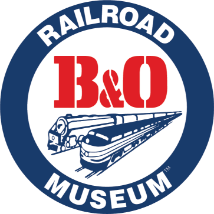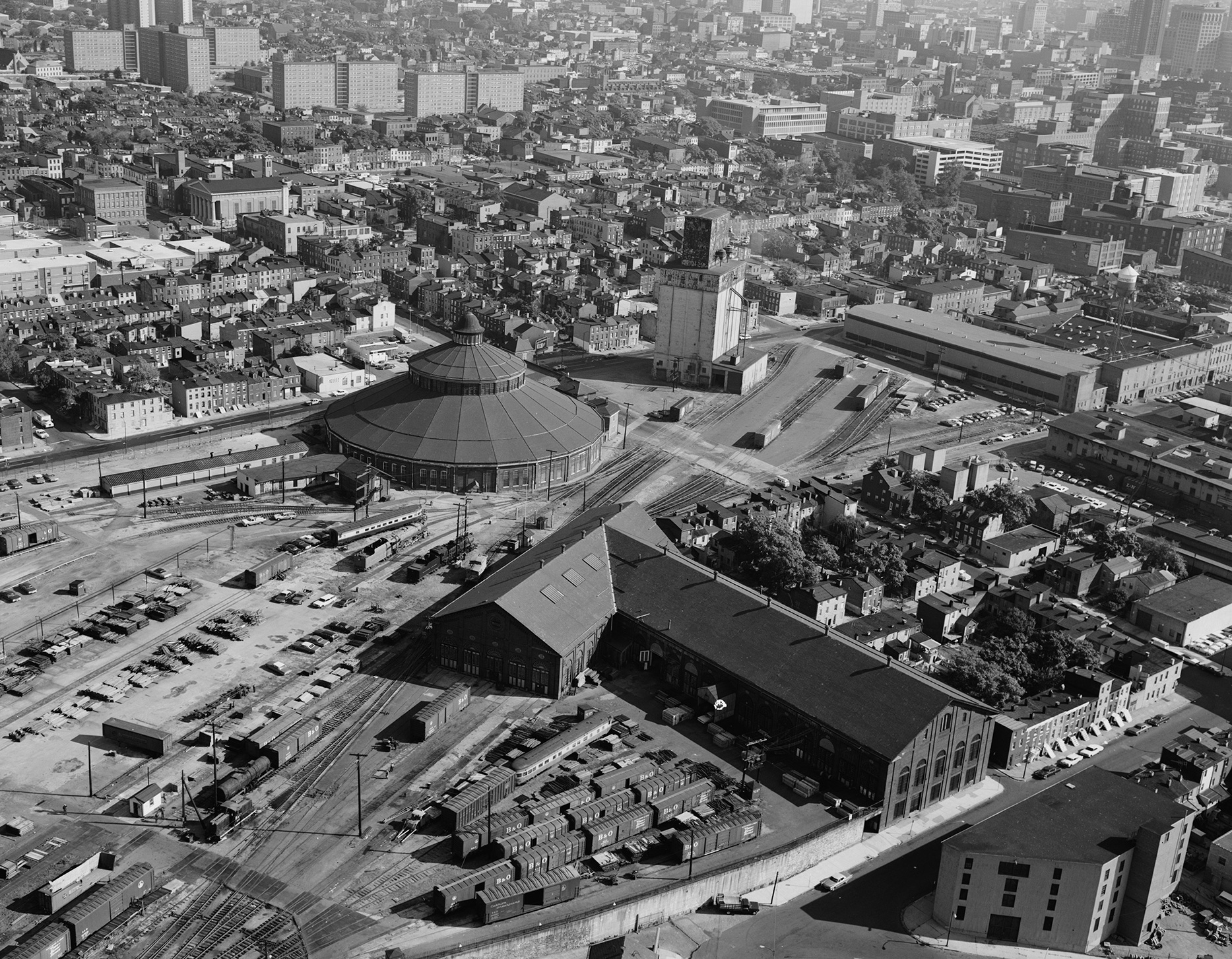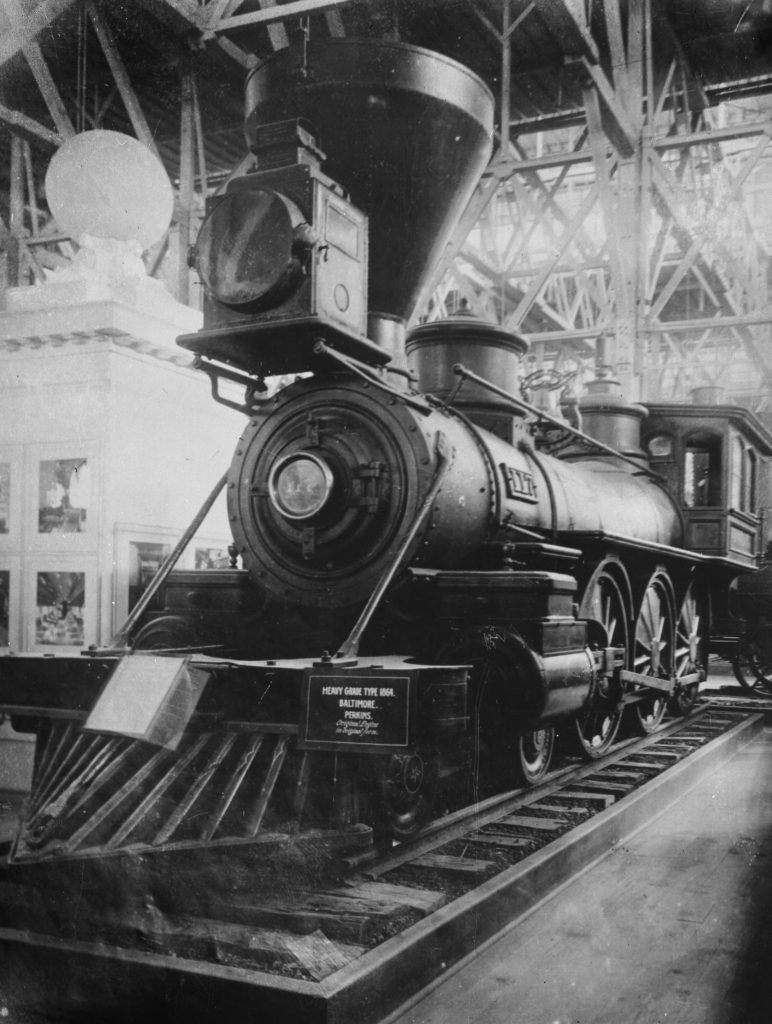
B&O Railroad Museum History
The history of the B&O Museum stretches for many years preceding its 1953 official opening, reaching back at least to the 1890s. The museum’s history is full of openings, fearful closings, glorious re-openings, and enlivening initiatives.
When reading this story, please remember that until the museum became an independent nonprofit in 1990 from the railroad companies, its victories, and the vicissitudes during its early years mirror those of the B&O Railroad. When the Museum was prospering, so too was the financial and corporate health of the Railroad — the reverse also was true.
Before the Beginning
It all started with the 1893 World’s Columbian Exhibition in Chicago. American railroads, as the largest and most aggressive US industry at the time, committed to showing their best in speeding locomotives and splendid passenger cars. The B&O, the country’s first railroad company, assigned Joseph Pangborn, an Assistant Passenger Agent, to create a great show. At the close of the hugely successful Exposition, it was expected that at least portions of the railroad exhibit would be placed under the care of Chicago’s newly formed Field Museum. However, the Museum turned its interests instead to natural history and much of the B&O equipment returned to Baltimore and languished in obscurity. As the B&O began serious planning to celebrate its 100th anniversary in 1927, interest in the “old trains” returned. Those plans produced the now famous 1927 Fair of the Iron Horse, a two-week gaudy and grand railroad theme park in Halethorpe, Maryland. Following the end of the Fair, much of the antique railroad technology remained in storage until an August 1935 hurricane destroyed the Fair buildings and damaged much of their contents.
The Museum Founding
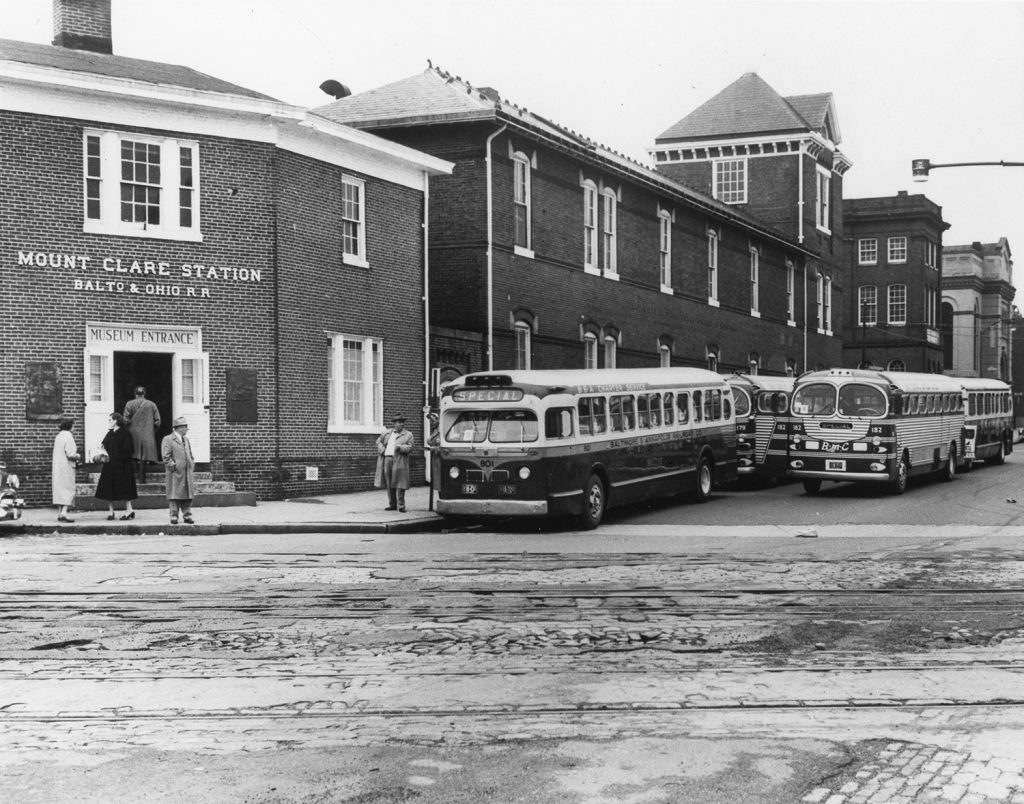
At this point, a long serving B&O publicist Lawrence Sagle was charged with preserving what remained from the Fair. Fortunately, he arranged to have everything moved to the then largely empty 1875 roundhouse situated in the center of Bailey’s Wye under the Ostend Street Bridge (adjacent to M&T Bank Stadium in Downtown Baltimore). With this transfer, Sagle, later the first Curator for the fledgling Museum, managed to prevent scrapping scheduled for much of the historic equipment. Once again, it was possible for school classes or railroad buffs to visit, although doing so required crossing active railroad lines into a dingy building by appointment only. Perhaps with knowledge of the B&O’s plan to abandon and demolish the Bailey’s roundhouse in 1953, Sagle wisely and successfully sought to move all the equipment to another largely empty B&O building—the circular 1884 Baldwin Roundhouse passenger car shop within the Mt. Clare B&O Shops on Pratt Street (the current site of the Museum).
With this final move, Sagle’s guidance, and a good deal of perseverance led to the B&O Railroad Company’s plans for the grand opening of the B&O Transportation Museum in the roundhouse on Thursday, July 2, 1953. Attended by railroad officials, Governor McKeldin, and Baltimore municipal leaders, the day included a grand celebratory pageant. From this point through 1990, the Museum was managed by the B&O Railroad itself, and later the Chessie System, as a part of its marketing and outreach departments.
The Early Years – Snapshot Under Railroad Leadership
- 1958: After five years, recession led the B&O to temporarily close the Museum
- 1961: Designated as National Historic Landmark by the US Department of the Interior
- 1962: Sagle retired
- 1964: Museum reopened in connection with 150th Anniversary of writing of the Star-Spangled Banner; Marian Smith named Manager
- 1973: Museum closed for extensive renovations and upgrades proposed by Hays T. Watkins, Chairman of the Board of the Chessie System
- 1976: Reopened following restorations with name change to B&O Railroad Museum
- 1977-1980: Multi-year celebration of the B&O’s 150th Anniversary
Museum as an Independent Nonprofit Corporation
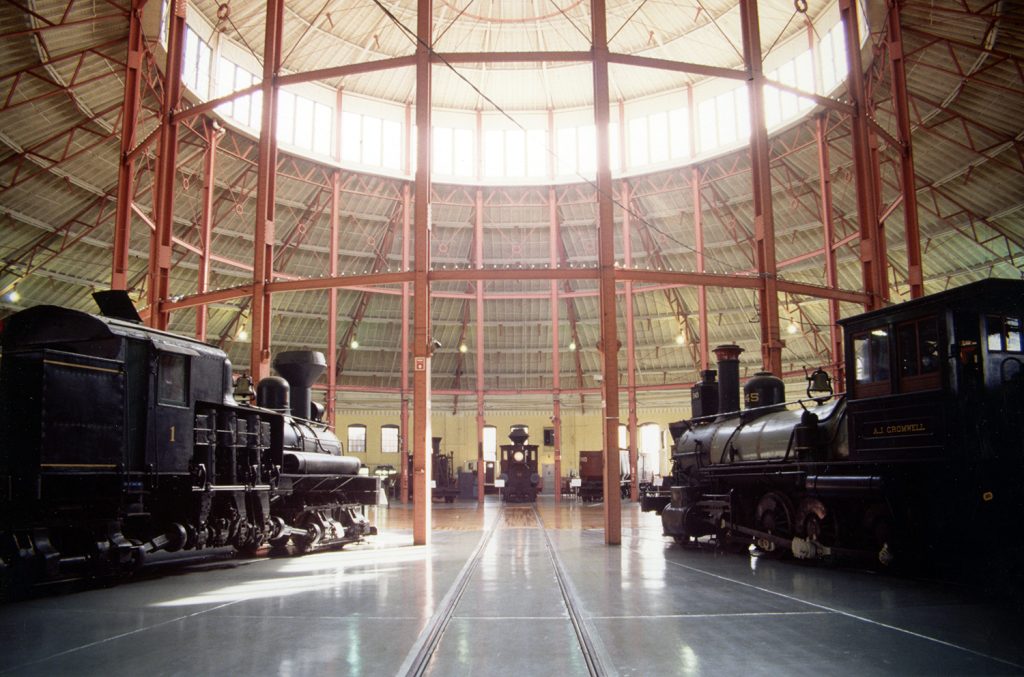
The CSX Corporation was established in 1980 when the Chessie System was merged with Seaboard Coast Line. The separation of the Museum from its managing railroad companies was discussed as early as 1974 and became effective with CSX Board action in November 1987. All land and property were officially deeded to a newly formed nonprofit in 1990. These actions led to the establishment of the first Museum’s first Board of Directors in 1989. Early board members primarily came from within the CSX executive family but gradually came to represent Baltimore leadership.
Museum History Snapshot as a Nonprofit
- 1989: Smith retired; John Hankey named Chief Curator
- 1990: CSX Corporation funded the Research Library and Archives, naming it in honor of Hays T. Watkins
- 1991: John Ott named Executive Director
- 1999: Museum becomes one of the first affiliates of the Smithsonian Institution
- 2000: Courtney Wilson named Executive Director
- 2002: Opening of Fair of the Iron Horse 175 to celebrate B&O 175th anniversary
- 2003: Catastrophic Collapse of the Roundhouse roof and temporary Museum closure
- 2004: Museum reopens to the public and decides to build a contemporary restoration shop to restore all damaged pieces of rolling stock from the roof collapse
- 2018: Kris Hoellen named Executive Director
- 2019: Jonathan Goldman named Chief Curator
- 2021: The B&O No. 51 is unveiled, fully restored. This marks the first significant piece of rolling stock restored in our restoration shop that was not impacted from the 2003 roof collapse.
- 2021: Museum designated as a National Network to Freedom Underground Railroad Site by the National Park Service
- 2027: 200th Anniversary of American Railroading and the founding of the B&O Railroad
